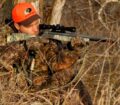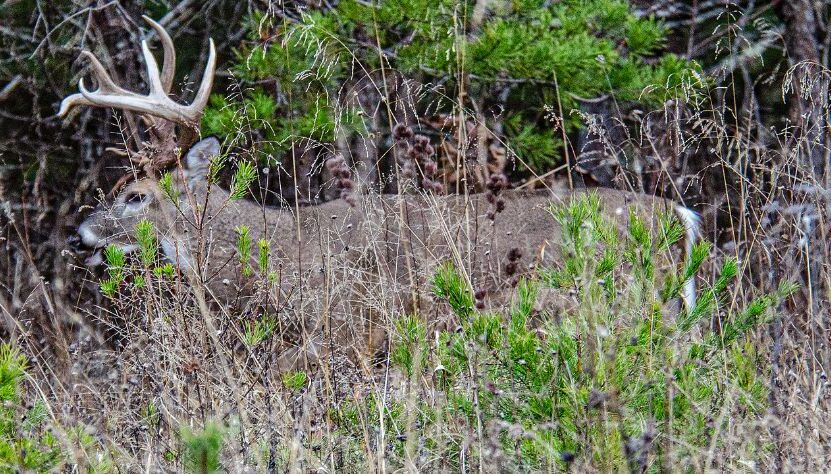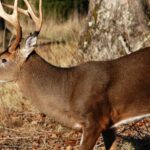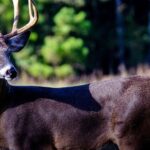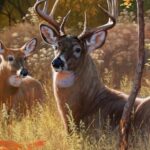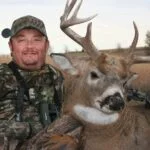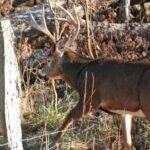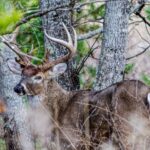Editor’s Note: Hunters have used man drives successfully for deer for numbers of years; all across the U.S., Northern hunters use man drives with their buddies to take deer that they can’t seem to bag.
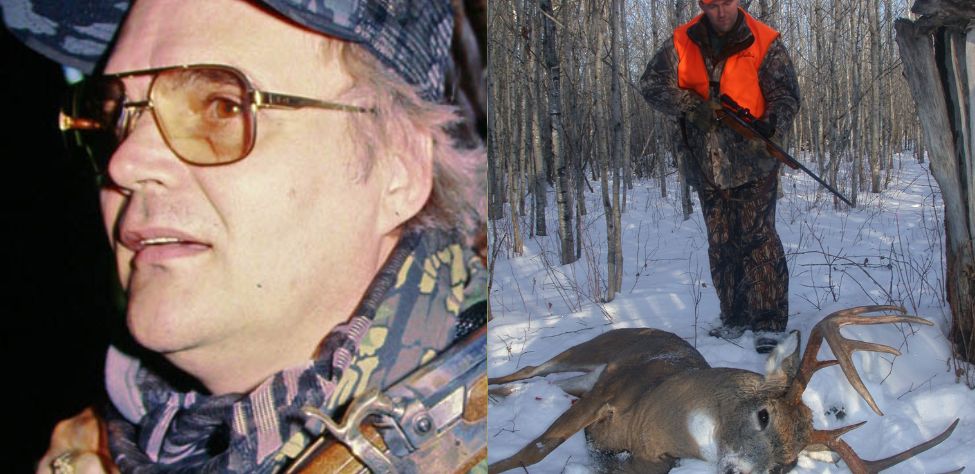
The late Dick Kirby of Orchard Park, New York, the creator of Quaker Boy Game Calls, always buddy hunted on the last day of deer season to produce a trophy buck. “One year in Ohio during the closing days of deer season, eight friends and I put on man drives on one farm we’d hunted,” Kirby recalled. “At the end of the season, when you have nothing to lose by spooking a big buck, man-drives often will help you bag that end-of-the-season monster-sized buck.”
Kirby’s strategy, however, differed from many man-drive tactics. Kirby wanted to pinpoint the locations of the buck beds and the places the bucks would go when the hunters drove bucks out of thick cover.

“Most of the time if you unsuccessfully drive a bedding area, you may not get an opportunity to see that deer again that day,” Kirby explained to me. “But we plan our drive by determining where a buck will go after we drive a patch of thick cover. If either a driver or one of the standers doesn’t take the buck, we set up the drive to force the buck to move into the next patch of thick cover we intend to drive. By moving from bedding area to bedding area, even if we don’t bag the buck holding in the bedding spot on the first drive, we probably will get another shot at that same deer later.”
One year at the end of the season, by lunch on the first day, none of the man drives that Kirby and his team had put on had yielded a big buck. Then, one of the hunters suggested they make the last drive of the morning through a very dense patch of cover next to the farmer’s house. Even if they didn’t bag a buck, the hunters thought they’d be close to the dinner table after the completion of the drive.
“We always change drivers and standers after each drive to give every hunter a chance to bag a buck,” Kirby explained. “On this particular drive, I stood at the end of a thick cover that emptied into a field. We only had conducted the drive for about 15 minutes when I heard a shot. One of the standers shouted, ‘I got him.’
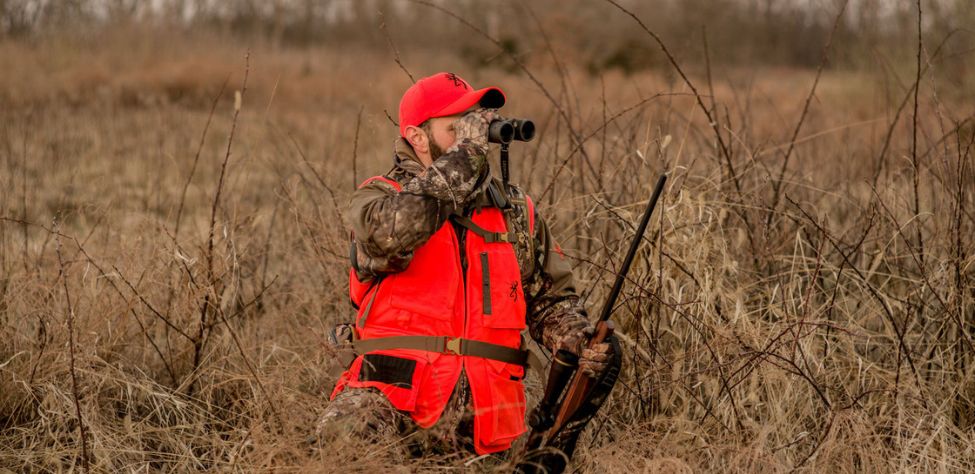
“As the drivers continued to come toward me, I heard one of the drivers say he thought he heard a buck get up. In only a few seconds, I spotted one of the biggest bucks I’d ever seen break from the thick cover and run across the field where I’d taken a stand. I aimed for the back of the deer’s neck as he ran away from me. I squeezed the trigger, and the buck went down. The buck’s rack would have scored 140 to 150 points on Boone & Crockett and field-dressed at 175 pounds.”
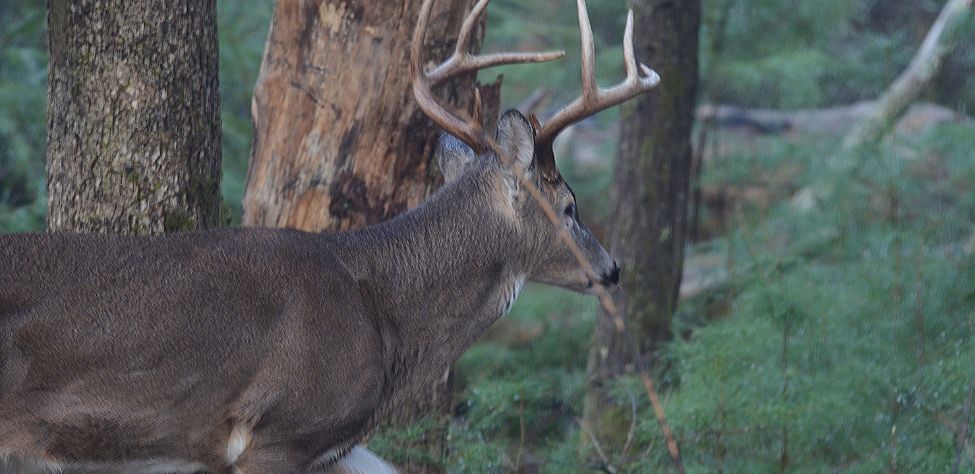
Using this drive tactic at the end of the deer season, Dick Kirby and his team of hunters made little pushes, moving bucks from one bedding place to another, until they finally found the thick-cover hideout where the big bucks were holding. At the end of the season when you have nothing to lose by invading a bedding area, little pushes in thick cover may yield monster bucks that have eluded you all season for you to take.

How to Hunt and Take Big Buck Deer on Small Properties
In this book, you’ll hear from 14 hunters who either have gained permission or leased properties as small as six acres to as much as 250 acres, and how they consistently take older-age-class bucks off these little lands.
VERSIONS: AUDIBLE, KINDLE & PRINT

Jim Crumley’s Secrets of Bowhunting Deer
Using a black magic marker and a gray work jumpsuit, Jim Crumley of Buchanan, Virginia, drastically changed the nature and purpose of hunting camouflage when he created the first sportsman’s camouflage – Trebark. Crumley’s love of bowhunting and his desire to be more invisible changed hunting clothing forever.
In this hunting guide, he shares the wisdom that he’s learned throughout his lifetime about how to be a hunter, how to find a deer lease, how to scout for deer, and more.
Special features include how to:
- Have a magic 60 acres to hunt
- Decide the best equipment to use
- Find deer year-round
- Locate land to hunt
- Know the best place to put your tree stand
- Get bucks within bow range
VERSIONS: AUDIBLE, KINDLE & PRINT

How to Hunt Deer Like a Pro
How do you know if the land you hunt has a trophy deer on it? Wildlife manager Bob Zaiglin, of Uvalde, Texas and Jim Crumley, the father of modern-day hunting camouflage, tells you how to find out. GPS can make finding and taking that trophy buck easier. This hunting guide will teach you how to hunt big bucks where no one else can find them, how to call deer, and how to become versatile as a deer hunter, so that if one deer tactic doesn’t work, another one will.
In the chapter, “How to find Bucks at Scrape,” Dr. Keith Causey, retired professor of Wildlife Science at Auburn University, describes the best way to hunt a scrape.
Brad Harrison of Neosho, Missouri, is a nationally-known videographer, professional deer hunter and master at calling deer. Another master is Will Primos of Primos Game Calls. These two experts will tell the best deer calls and when to use them in this book.
And for over 20 years, Bo Pitman, lodge manager of White Oak Plantation, has been studying deer movement patterns. He explains what types of conditions are best for predicting deer movement.
VERSIONS: AUDIBLE, KINDLE & PRINT

Deer hunting and deer hunters are drastically changing each year. To learn new techniques for hunting deer and have more places to hunt, I’ve interviewed some of the best deer hunters in the nation and share their tactics in How to Hunt Deer Like a Pro: Volume II.
In Chapter 10, Jacob Lamar tells you his tactics for consistently taking older-age-class bucks on public lands in several states. Chapter 11, Bob Walker explains how to find places on public lands where you can hunt that 99 percent of the other hunters never have considered hunting. The Bonus Chapter with David Ramey tells you how, where, when and with what equipment to take big Kansas bucks on public lands by hunting in 100-degree weather when others won’t hunt.
Chapter 13, Mark Drury, his family and his guests take mature bucks every season by having more small places to hunt rather than one large property. Drury explains the strategy of having satellite farms to hunt that only may be 50-150 acres each or less. Chapter 15, Pat Reeve, who hunts far-northern states and Canada, says, “I don’t like hunting for mature bucks until the weather is 20 degrees or less.” Chapter 4, Dr. Larry Marchinton says that funnels are the most-reliable stand sites to hunt for big bucks and tells why.
VERSIONS: AUDIBLE & PRINT
Tomorrow: How Southern Hunters Take Big Deer


